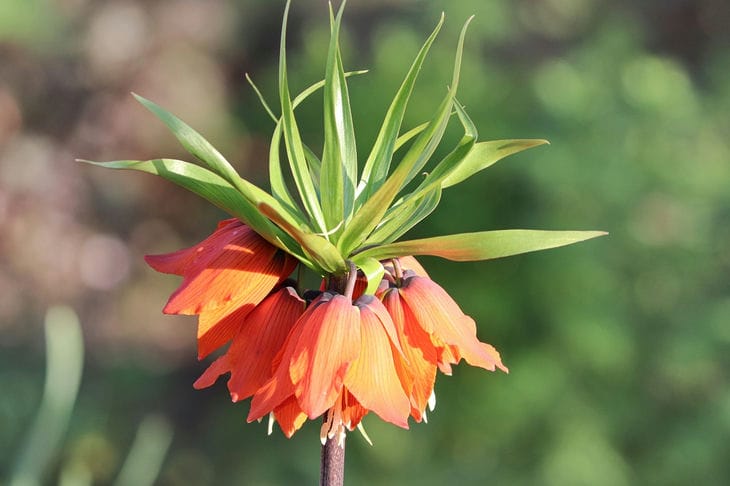Moles are one of the main pests of gardens.
These animals dig passages many meters long, are voracious and reproduce quickly.
Characteristic soil heaps indicate their presence, and the fight to preserve the root crop harvest should begin immediately, says Anastasia Kovrizhnykh .

Some summer residents recommend relying on folk recipes rather than “chemicals”.
One of them is considered to be the planting of the imperial fritillary, which is sometimes mistakenly called the royal lily. It should also not be confused with the checkered fritillary. The real popular name of this flower is "royal crown".
In nature, the imperial fritillary grows in the Himalayas, as well as in Iran and Afghanistan, so you shouldn’t expect it to grow by self-seeding.
First of all, it is an ornamental plant, so you can find it in garden centers, on specialized portals selling flowers and especially bulbous plants.
Finally, you can ask other gardeners for young bulbs to grow on your plot. Where you definitely shouldn't buy the royal crown is from someone in the summer in bags with colorful pictures. Tubers and bulbs still require proper storage, and the sun doesn't fit into the necessary conditions.
The best varieties
- "Aurora"
- "Rubra"
- "Lutea"
- "Strip Beauty"
- "Raddeana"
Since the described species belongs to cultivated plants, breeders have already done some selection work, and there are varieties with early or late flowering, as well as with flowers of different colors.
"Aurora" and "Rubra" are the most common varieties with the usual orange color of flowers. "Lutea" and "Strip Beauty" will paint the garden in yellow colors, and "Raddeana" decorates the plots with yellow-green tones.
In order to enjoy the flowering and get rid of moles the following year, purchased bulbs of the royal crown must be planted in early autumn, long before frost.
If the plot is located in an area where temperatures can drop below zero as early as September, then the planting dates can be moved to the end of August, when the nights are cool enough.
In the south, accordingly, it is necessary to take care of the fate of the bulbs by the end of August. They can be stored in a ventilated place without direct sunlight until planting.
How hazel grouse helps fight moles
The smell of the bulbs may remind the human sense of smell of garlic. But as experienced gardeners claim, for underground pests this plant smells like fox, which makes them avoid places where the royal crown grows.
This effect lasts only during flowering, and after the last flowers have faded, the area may again be subject to an invasion of underground pests.
Thus, it is not possible to get rid of moles using only the imperial hazel grouse.
In order to say goodbye to them, you will have to supplement the organic method with modern preparations, for example, tablets that spread an unpleasant odor for animals underground when in contact with water.
And yet, if you decide to include this bulbous plant in the list of used products, you should take into account several proven methods.
Firstly, you should carefully read the flowering periods before purchasing bulbous material. The best option would be to choose not one, but several different varieties with different flowering periods.
The second secret is in the bulb planting scheme. It is best not to concentrate them in one place on the flowerbed, but, on the contrary, to plant them around the perimeter of the plot, keeping a distance of more than a meter or two between the plants.
With this method of planting, you need to make sure that your neighbors will not damage them, for example, by throwing branches over the fence that could break the fragile peduncle.
Fritillaria imperialis or imperial crown most often blooms in April and at this time, under the conditions of the correct planting scheme, can protect the area from moles.
The best results are achieved by combining the organic method with modern pest control products.
Previously, we talked about how to get rid of dandelions forever so that they stop causing problems for garden crops .









